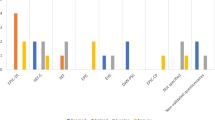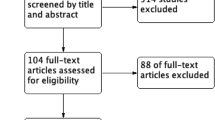Abstract
Urinary incontinence is a common and debilitating problem, and post-prostatectomy incontinence (PPI) is becoming an increasing problem, with a higher risk among elderly men. Current treatment options for PPI include pelvic floor muscle exercises and surgery. Conservative treatment has disputable effects, and surgical treatment is expensive, is not always effective, and may have complications. This article describes the prevalence and causes of PPI and the current treatment methods. We conducted a search of the PUBMED database and reviewed the current literature on novel medical treatments of PPI, with special focus on the aging man. Antimuscarinic drugs, phosphodiesterase inhibitors, duloxetine, and α-adrenergic drugs have been proposed as medical treatments for PPI. Most studies were small and used different criteria for quantifying incontinence and assessing treatment results. Thus, there is not enough evidence to recommend the use of these medications as standard treatment of PPI. To determine whether medical therapy is a viable option in the treatment of PPI, randomized, placebo-controlled studies are needed that also assess side effects in the elderly population.
Similar content being viewed by others
References
Burkhard FC, Lucas MG, Berghmans LC, Bosch JL, Cruz F, Lemack GE, et al. EAU guidelines on urinary incontinence in adults. European Association of Urology. 2016. Available at: http://uroweb.org/guideline/urinary-incontinence/. Accessed 28 Mar 2016.
Gacci M, Ierardi A, Rose AD, Tazzioli S, Scapaticci E, Filippi S, et al. Vardenafil can improve continence recovery after bilateral nerve sparing prostatectomy: results of a randomized, double blind, placebo-controlled pilot study. J Sex Med. 2010;7(1 Pt 1):234–43.
Caremel R, Corcos J. Incontinence after radical prostatectomy: anything new in its management? Can Urol Assoc J. 2014;8(5–6):202–12.
Fowler FJ, Barry MJ, Luyao G, Wasson J, Roman A, Wennberg J. Effect of radical prostatectomy for prostate-cancer on patient quality-of-life: results from a medicare survey. Urology. 1995;45(6):1007–13.
Holm HV, Fossa SD, Hedlund H, Dahl AA. Study of generic quality of life in patients operated on for post-prostatectomy incontinence. Int J Urol. 2013;20(9):889–95.
Lepor H. A review of surgical techniques for radical prostatectomy. Rev Urol. 2005;7(Suppl 2):S11–7.
Bauer RM, Bastian PJ, Gozzi C, Stief CG. Postprostatectomy incontinence: all about diagnosis and management. Eur Urol. 2009;55(2):322–33.
Hoyland K, Vasdev N, Abrof A, Boustead G. Post-radical prostatectomy incontinence: etiology and prevention. Rev Urol. 2014;16(4):181–8.
Groutz A, Blaivas JG, Chaikin DC, Weiss JP, Verhaaren M. The pathophysiology of post-radical prostatectomy incontinence: a clinical and video urodynamic study. J Urol. 2000;163(6):1767–70.
Chao R, Mayo ME. Incontinence after radical prostatectomy: detrusor or sphincter causes. J Urol. 1995;154(1):16–8.
Kielb SJ, Clemens JQ. Comprehensive urodynamics evaluation of 146 men with incontinence after radical prostatectomy. Urology. 2005;66(2):392–6.
Leach GE, Trockman B, Wong A, Hamilton J, Haab F, Zimmern PE. Post-prostatectomy incontinence: urodynamic findings and treatment outcomes. J Urol. 1996;155(4):1256–9.
Kilminster S, Muller S, Menon M, Joseph JV, Ralph DJ, Patel HR. Predicting erectile function outcome in men after radical prostatectomy for prostate cancer. BJU Int. 2012;110(3):422–6.
Stanford JL, Feng Z, Hamilton AS, Gilliland FD, Stephenson RA, Eley JW, et al. Urinary and sexual function after radical prostatectomy for clinically localized prostate cancer: the Prostate Cancer Outcomes Study. JAMA. 2000;283(3):354–60.
Ficarra V, Novara G, Rosen RC, Artibani W, Carroll PR, Costello A, et al. Systematic review and meta-analysis of studies reporting urinary continence recovery after robot-assisted radical prostatectomy. Eur Urol. 2012;62(3):405–17.
Rodriguez E Jr, Skarecky DW, Ahlering TE. Post-robotic prostatectomy urinary continence: characterization of perfect continence versus occasional dribbling in pad-free men. Urology. 2006;67(4):785–8.
Hollabaugh RS Jr, Dmochowski RR, Kneib TG, Steiner MS. Preservation of putative continence nerves during radical retropubic prostatectomy leads to more rapid return of urinary continence. Urology. 1998;51(6):960–7.
Kojima Y, Takahashi N, Haga N, Nomiya M, Yanagida T, Ishibashi K, et al. Urinary incontinence after robot-assisted radical prostatectomy: pathophysiology and intraoperative techniques to improve surgical outcome. Int J Urol. 2013;20(11):1052–63.
Skarecky D, Morales B, Chang A, Ahlering T. Simple method to predict return of continence after robot-assisted radical prostatectomy. J Endourol. 2011;25(9):1451–5.
Krupski TL, Saigal CS, Litwin MS. Variation in continence and potency by definition. J Urol. 2003;170(4 Pt 1):1291–4.
Holm HV, Fossa SD, Hedlund H, Schultz A, Dahl AA. How should continence and incontinence after radical prostatectomy be evaluated? A prospective study of patient ratings and changes with time. J Urol. 2014;192(4):1155–61.
Arroyo Fernandez R, Garcia-Hermoso A, Solera-Martinez M, Martin Correa MT, Ferri Morales A, Martinez-Vizcaino V. Improvement of continence rate with pelvic floor muscle training post-prostatectomy: a meta-analysis of randomized controlled trials. Urol Int. 2015;94(2):125–32.
Anderson CA, Omar MI, Campbell SE, Hunter KF, Cody JD, Glazener CM. Conservative management for postprostatectomy urinary incontinence. Cochrane Database Syst Rev. 2015;(1):CD001843.
McGrother CW, Donaldson MM, Hayward T, Matthews R, Dallosso HM, Hyde C. Urinary storage symptoms and comorbidities: a prospective population cohort study in middle-aged and older women. Age Ageing. 2006;35(1):16–24.
Subak LL, Wing R, West DS, Franklin F, Vittinghoff E, Creasman JM, et al. Weight loss to treat urinary incontinence in overweight and obese women. N Engl J Med. 2009;360(5):481–90.
McIntosh S, Drinnan M, Griffiths C, Robson W, Ramsden P, Pickard R. Relationship of abdominal pressure and body mass index in men with LUTS. Neurourol Urodyn. 2003;22(6):602–5.
Seibold J, Werther M, Amend B, Stenzl A, Sievert K-D. Stress urinary incontinence after radical prostatectomy: long term effects of endoscopic injection with dextranomer/hylauronic acid copolymer. J Urol. 2009;181(4 Suppl):621.
Van der Aa F, Drake MJ, Kasyan GR, Petrolekas A, Cornu JN. The artificial urinary sphincter after a quarter of a century: a critical systematic review of its use in male non-neurogenic incontinence. Eur Urol. 2013;63(4):681–9.
Imamoglu MA, Tuygun C, Bakirtas H, Yigitbasi O, Kiper A. The comparison of artificial urinary sphincter implantation and endourethral macroplastique injection for the treatment of postprostatectomy incontinence. Eur Urol. 2005;47(2):209–13.
Chapple CR, Khullar V, Gabriel Z, Muston D, Bitoun CE, Weinstein D. The effects of antimuscarinic treatments in overactive bladder: an update of a systematic review and meta-analysis. Eur Urol. 2008;54(3):543–62.
Goepel M, Kirschner-Hermanns R, Welz-Barth A, Steinwachs K-C, Ruebben H. Urinary incontinence in the elderly: part 3 of a series of articles on incontinence. Dtsch Arztebl Int. 2010;107(30):531–6.
Samuelsson E, Odeberg J, Stenzelius K, Molander U, Hammarström M, Franzen K, et al. Effect of pharmacological treatment for urinary incontinence in the elderly and frail elderly: a systematic review. Geriatr Gerontol Int. 2015;15(5):521–34.
Deliveliotis C, Liakouras C, Delis A, Skolarikos A, Varkarakis J, Protogerou V. Prostate operations: long-term effects on sexual and urinary function and quality of life. Comparison with an age-matched control population. Urol Res. 2004;32(4):283–9.
Porena M, Mearini E, Mearini L, Vianello A, Giannantoni A. Voiding dysfunction after radical retropubic prostatectomy: more than external urethral sphincter deficiency. Eur Urol. 2007;52(1):38–45.
Liss MA, Morales B, Skarecky D, Ahlering TE. Phase 1 clinical trial of Vesicare™ (Solifenacin) in the treatment of urinary incontinence after radical prostatectomy. J Endourol. 2014;28(10):1241–5.
Bianco FJ, Albala DM, Belkoff LH, Miles BJ, Peabody JO, He W, et al. A randomized, double-blind, solifenacin succinate versus placebo control, phase 4, multicenter study evaluating urinary continence after robotic assisted radical prostatectomy. J Urol. 2015;193(4):1305–10.
Shim M, Kim J, Park S, Choi S-K, Lee SM, Huh KO, et al. The therapeutic effect of solifenacin succinate on the recovery from voiding dysfunction after radical prostatectomy in men with clinically localized prostate cancer: a prospective, randomized, controlled study. Urology. 2015;85(5):1123–9.
Tsakiris P, de la Rosette JJ, Michel MC, Oelke M. Pharmacologic treatment of male stress urinary incontinence: systematic review of the literature and levels of evidence. Eur Urol. 2008;53(1):53–9.
Alhasso A, Glazener CM, Pickard R, N’Dow J. Adrenergic drugs for urinary incontinence in adults. Cochrane Database Syst Rev. 2005;(3):CD001842.
Andersson KE, Uckert S, Stief C, Hedlund P. Phosphodiesterases (PDEs) and PDE inhibitors for treatment of LUTS. Neurourol Urodyn. 2007;26(6 Suppl):928–33.
Filippi S, Morelli A, Sandner P, Fibbi B, Mancina R, Marini M, et al. Characterization and functional role of androgen-dependent PDE5 activity in the bladder. Endocrinology. 2007;148(3):1019–29.
Morelli A, Sarchielli E, Comeglio P, Filippi S, Mancina R, Gacci M, et al. Phosphodiesterase type 5 expression in human and rat lower urinary tract tissues and the effect of tadalafil on prostate gland oxygenation in spontaneously hypertensive rats. J Sex Med. 2011;8(10):2746–60.
Izumi H, Kaiho Y, Miyazato M, Kawamorita N, Nakagawa H, Arai Y. Effects of phosphodiesterase type 5 inhibitor, tadalafil, on continence reflex in rats. Int Urogynecol J. 2014;25(12):1721–7.
Gandaglia G, Albersen M, Suardi N, Gallina A, Abdollah F, Castiglione F, et al. Postoperative phosphodiesterase type 5 inhibitor administration increases the rate of urinary continence recovery after bilateral nerve-sparing radical prostatectomy. Int J Urol. 2013;20(4):413–9.
Andersson K-E, de Groat WC, McVary KT, Lue TF, Maggi M, Roehrborn CG, et al. Tadalafil for the treatment of lower urinary tract symptoms secondary to benign prostatic hyperplasia: pathophysiology and mechanism(s) of action. Neurourol Urodyn. 2011;30(3):292–301.
McVary KT, Roehrborn CG, Kaminetsky JC, Auerbach SM, Wachs B, Young JM, et al. Tadalafil relieves lower urinary tract symptoms secondary to benign prostatic hyperplasia. J Urol. 2007;177(4):1401–7.
Montorsi F, Corbin J, Phillips S. Review of phosphodiesterases in the urogenital system: new directions for therapeutic intervention. J Sex Med. 2004;1(3):322–36.
Truss MC, Stief CG, Uckert S, Becker AJ, Wefer J, Schultheiss D, et al. Phosphodiesterase 1 inhibition in the treatment of lower urinary tract dysfunction: from bench to bedside. World J Urol. 2001;19(5):344–50.
Patel HR, Ilo D, Shah N, Cuzin B, Chadwick D, Andrianne R, et al. Effects of tadalafil treatment after bilateral nerve-sparing radical prostatectomy: quality of life, psychosocial outcomes, and treatment satisfaction results from a randomized, placebo-controlled phase IV study. BMC Urol. 2015;15:31.
Canat L, Guner B, Gurbuz C, Atis G, Caskurlu T. Effects of three-times-per-week versus on-demand tadalafil treatment on erectile function and continence recovery following bilateral nerve sparing radical prostatectomy: results of a prospective, randomized, and single-center study. Kaohsiung J Med Sci. 2015;31(2):90–5.
Hyndman ME, Bivalacqua TJ, Mettee LZ, Su LM, Trock BJ, Pavlovich CP. Nightly sildenafil use after radical prostatectomy has adverse effects on urinary convalescence: Results from a randomized trial of nightly vs on-demand dosing regimens. Can Urol Assoc J. 2015;9(11–12):414–9.
Dell’Atti L. Efficacy of tadalafil once daily versus fesoterodine in the treatment of overactive bladder in older patients. Eur Rev Med Pharmacol Sci. 2015;19(9):1559–63.
Alan C, Eren AE, Ersay AR, Kocoglu H, Basturk G, Demirci E. Efficacy of duloxetine in the early management of urinary continence after radical prostatectomy. Curr Urol. 2015;8(1):43–8.
Alberti C. Coadministration of low-dose serotonin/noradrenaline reuptake inhibitor (SNRI) duloxetine with alpha 2-adrenoceptor blockers to treat both female and male mild-to-moderate stress urinary incontinence (SUI). G Chir. 2013;34(7–8):189–94.
Fink KG, Huber J, Wurnschimmel E, Schmeller NT. The use of duloxetine in the treatment of male stress urinary incontinence. Wien Med Wochenschr. 2008;158(3–4):116–8.
Zahariou A, Papaioannou P, Kalogirou G. Is HCI duloxetine effective in the management of urinary stress incontinence after radical prostatectomy? Urol Int. 2006;77(1):9–12.
Schlenker B, Gratzke C, Reich O, Schorsch I, Seitz M, Stief CG. Preliminary results on the off-label use of duloxetine for the treatment of stress incontinence after radical prostatectomy or cystectomy. Eur Urol. 2006;49(6):1075–8.
Collado Serra A, Rubio-Briones J, Puyol Payas M, Iborra Juan I, Casanova Ramon-Borja J, Solsona Narbon E. Postprostatectomy established stress urinary incontinence treated with duloxetine. Urology. 2011;78(2):261–6.
Filocamo MT, Marzi VL, Del Popolo G, Cecconi F, Villari D, Marzocco M, et al. Pharmacologic treatment in postprostatectomy stress urinary incontinence. Eur Urol. 2007;51(6):1559–64.
Cornu J-N, Merlet B, Ciofu C, Mouly S, Peyrat L, Sebe P, et al. Duloxetine for mild to moderate postprostatectomy incontinence: preliminary results of a randomised, placebo-controlled trial. Eur Urol. 2011;59(1):148–54.
Cornu J-N, Haab F. Urinary incontinence in 2010: the evolution of SUI management. Nat Rev Urol. 2011;8(2):68–70.
Acknowledgments
Ole Martin Løvvik has assisted with the bibliography, given technical support, and carefully read through the manuscript.
Author information
Authors and Affiliations
Corresponding author
Ethics declarations
Conflict of interest
Anja Løvvik, Stig Müller and Hitendra Patel declare no conflicts of interest.
Funding
The authors received no funding for the preparation of this manuscript.
Rights and permissions
About this article
Cite this article
Løvvik, A., Müller, S. & Patel, H.R.H. Pharmacological Treatment of Post-Prostatectomy Incontinence: What is the Evidence?. Drugs Aging 33, 535–544 (2016). https://doi.org/10.1007/s40266-016-0388-8
Published:
Issue Date:
DOI: https://doi.org/10.1007/s40266-016-0388-8




